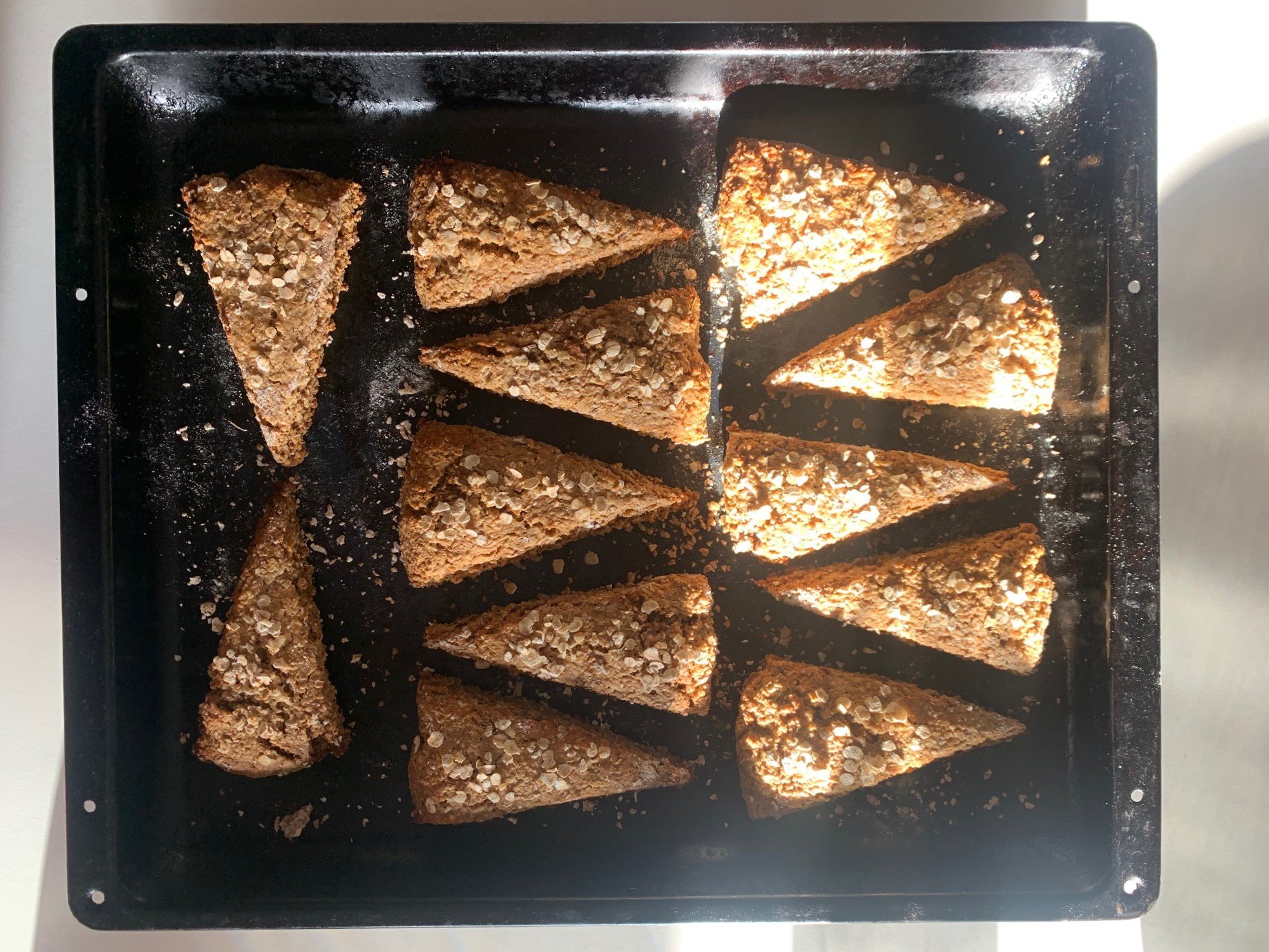Bannock Scones
Bannocks are often made on Brigid’s Day on (or around) the 1st February depending on whether you mark the folk date or prefer to coincide with the lunar or astrological date. In Ireland this date also coincides with the festival of Imbolc, when our Celtic ancestors believed the Goddess Brigid returned to the land, after the hardships of Winter, bringing the first whispers of spring with her. It’s a festival of fertility, new beginnings and hope for the year ahead.
In Ireland the Celtic Goddess Brigid was Christianised and transformed into Saint Brigid. The Christian festival adopted many of the traditions of the original Celtic festival. Many people would have left out offerings of food for Brigid on the eve of Imbolc (31st January), such as bannocks and dairy products, to ensure health, prosperity and luck for the year ahead.
The word bannock actually covers a wide range of bread products made with different grains, including a quick flatbread made by some of the indigenous people of North America. For our purposes, in Ireland and Scotland, a bannock most often refers to a type of thick oatcake that would have traditionally been cooked on a griddle over an open fire and often cut into quarters (or farls). These are quite similar to the soda farls that we cook in the North of Ireland, but are made with a mixture of ground oats and wheat flour. I love cooking bannocks on a griddle but I needed to make a lot for some Brigid’s Day events this year, so I developed this recipe where they are cooked more like scones, in the oven. I’ve included rosemary in the recipe as this is one of the herbs associated with Brigid - who is also the Goddess of healing. These are delicious slathered in lots of good quality butter, which is appropriate as Brigid is also the goddess of domesticated animals and dairy products.
Makes 12
250g oats, plus a tablespoon to decorate
A sprig of rosemary, leaves picked off or a teaspoon dried rosemary
250g wholemeal flour
1 teaspoon salt
70g butter
1 teaspoon bicarbonate of soda
2 teaspoons treacle
375ml buttermilk
Preheat the oven to 200°C. Dust a baking tray with a little flour.
Put the oats in a food processor with the rosemary and pulse until it forms a coarse flour. Add the flour, cubed butter and salt and pulse again until the mixture has a breadcrumb-like texture.
Put the flour mixture in a large mixing bowl and stir in the bicarbonate of soda. Warm the treacle slightly until runny (I do this in the microwave) and mix with the buttermilk.
Make a well in the middle of the flour, add most of the buttermilk and using a ‘claw’ shaped hand bring the dough together. Being careful not to overwork it. Add a splash more buttermilk if needed.
Turn out onto a lightly floured worksurface. Knead a couple of times just until the dough is smooth and then pat out into a big round about 2.5 cm thick. Cut into 12 triangular wedges – as though you are cutting a cake. Brush with a little buttermilk and sprinkle a few oats on top.
Put on the prepared baking tray and then immediately into the oven to bake for 15 minutes. The scones are ready when they lift easily off the baking tray and their bottoms are a firm to the touch. Allow to cool a little but these are best served still warm from the oven.


